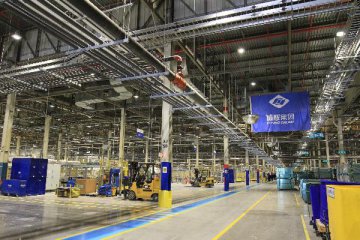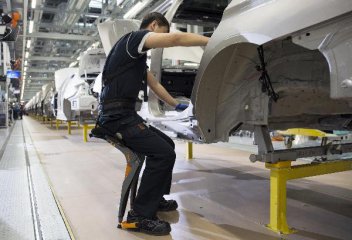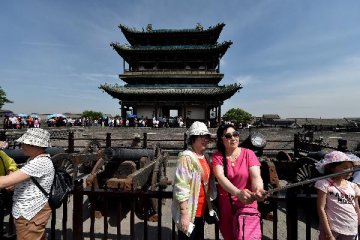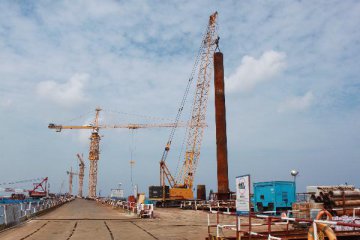
Over the last three years, 47 centrally administered state-owned enterprises (SOEs) have taken part in 1,676 projects in countries and regions along the Belt and Road covering energy, infrastructure and industrial cooperation, according to Xiao Yaqing, head of State-owned Assets Supervision and Administration Commission (SASAC) said on May 8.
Xiao made the remarks at a press conference on the eve of the Belt and Road Forum for International Cooperation scheduled for May 14-15 in Beijing.
It is learnt that Belt and Road countries has become major investment destination for Chinese central SOEs with energy, infrastructure and industrial cooperation as key sectors for their development.
Energy, infrastructure, industrial cooperation key sectors for development
In recent years, the annual average value of Chinese central SOEs supervised by the SASAC investing in the foreign countries increased by 15 percent, and their annual sales revenue increased by 4.5 percent. It is worth noting that most of the projects were involved in the countries along the Belt and Road routes, Xiao said.
China’s central SOEs have paid much attention to the fields of energy, infrastructure and industrial cooperation along the Belt and Road Routes.
In terms of infrastructure, Chinese enterprises have played their advantagesin constructing a batch of railways, high-speed railway projects, and expressway projects, including Monbasa-Nairobi railway in Kenya and Karakoram Highway (KKH), to provide more convenience to local residents. Meanwhile, the construction of optical cable and network facilities will boost the rapid development of communication industry in the country.
Liu Qitao, chairman of China Communications Construction Co. (CCCC) said at the press conference that the company signed contracts in the countries along the Belt and Road totaling 40 billion U.S. dollars in recent three years. Companies under CCCC have built some 10,320 km of highways, 95 deep-water wharves, 10 airports, 152 bridges, and 2,080 km of railways in Belt and Road countries.
In terms of energy, central SOEs have constructed more than 60 energy projects and oil and gas cooperation projects in over 20 countries along the Belt and Road, and also have undertaken several energy transportation projects and thermal power stations, hydropower stations, and nuclear power stations.
Meanwhile, China’s central SOEs have speeded up the construction of industrial parks.
Lv Kejian, former director with Department of Asian Affairs in Ministry of Commerce said that China has set up 56 economic and trade cooperative zones in 25 countries along the Belt and Road route at present, with total investment exceeding 18.5 billion U.S dollars.
“Industrial transfer does not equal to overcapacity transfer.”
Industrial transfer does not equal to overcapacity transfer, Zhong Tengfei, director with the Department of Great Power Relations Studies in National Institute of International Strategy, CASS, said China has attached great importance to infrastructure construction along the Belt and Road routes, which is good for local industrialization and local citizens’ income.
In the process, Chinese companies have played an important role in driving globalization and contributing to global economic recovery through pushing for freer trade and cultural exchanges, Xiao said.
At present, China’s central SOEs now have 9,112 agencies across 185 countries and regions. In the next step, the country will deepen the communication and cooperation in the sectors of equipment, technology, and management with countries along the B&R route, to boost the sustainable development of global economy.
It is significant for China’s central SOEs to control risks when investing in the B&R regions. Xiao said that SASAC and central SOEs have taken many steps to improve analysis, prevention and removal of risks; they look forward to more cooperation with international companies and organizations.
Investment in the B&R region is coordinated. Central SOEs have their own plans and are increasing supervision of the decision-making process for overseas projects, Xiao said.
Economic levels among countries along the Belt and Road routes are different. China’s central SOEs should pay much attention to the highlight risks and make contingency plans for prevention, Lv said.























Latest comments